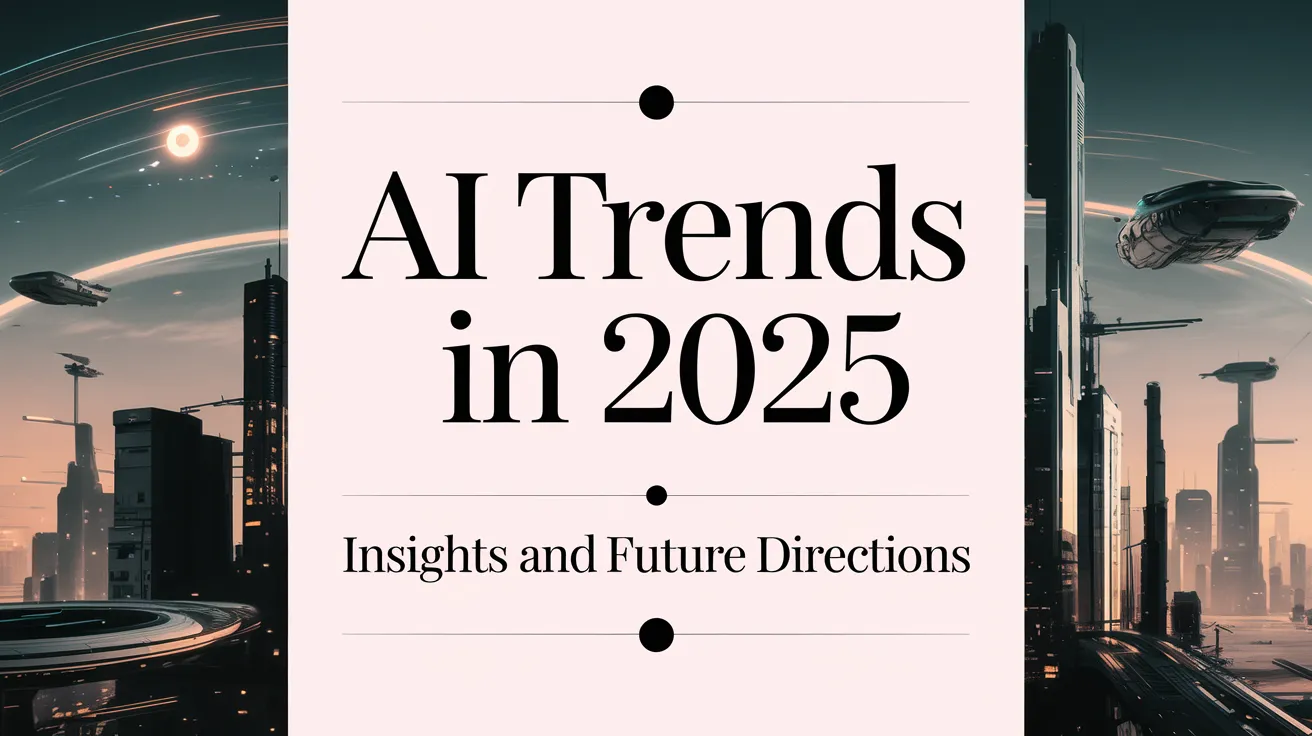AI Trends in 2025: Insights and Future Directions

Reflecting on AI Trends in 2025
As we approach the midpoint of 2025, it is an opportune moment to reflect on the significant developments in artificial intelligence (AI) that have shaped the year so far, while also anticipating what the future holds. AI’s rapid evolution prompts an examination of trends that drive both innovation and application across various sectors.
Trends Observed in Early 2025
Diving into the trends observed thus far this year, five pivotal developments stand out:
- A Dramatic Decrease in Inference Costs: The cost to execute AI models has plummeted, allowing more organizations to leverage sophisticated AI technologies.
- More Reasonable Reasoning Models: AI models are increasingly applying reasoning capabilities that balance performance with efficiency.
- An Increasing Drain on Digital Resources: The growing use of AI tools is taxing existing digital infrastructure and resources.
- The Return of Mixture of Experts (MoE) Models: This architecture has re-emerged, showing promise in enhancing model performance.
- AI Action is Trailing AI Rhetoric: While discussions on AI capabilities abound, actual implementations have not always kept pace.
Looking Ahead: Upcoming Trends
In terms of future trajectories, five trends are expected to shape the latter half of 2025:
- Benchmark Saturation and Diversification: As models become more capable, they will exhibit a range of performances, necessitating new evaluation metrics.
- Transcending Transformer Models: Innovations in model architectures may lead to alternatives that surpass traditional transformer frameworks.
- Embodied AI and Robotics: Efforts are intensifying to bridge AI with robotics for more dynamic applications in the physical world.
- Privacy vs. Personalization: Balancing user privacy with the need for personalizing AI interactions will emerge as a critical concern.
- AI Coworkers and Emotional Consequences: The introduction of AI as coworkers raises questions about potential emotional attachments and workplace dynamics.
The Dynamics of AI Application
As we witness AI’s ongoing evolution, it is evident that user applications are expanding rapidly alongside advancements in algorithms. This expanding landscape underscores the importance of contextual understanding in the application of AI technologies. The drive for practical applications of generative AI is becoming increasingly clear, reflecting a shift from theoretical capabilities to real-world utility.
Cost Reductions and Model Enhancements
The significant reductions in inference costs have enabled the practicality of AI agents, showcasing accelerated improvements in operational efficiency. AI models have matured drastically, and recent shifts in algorithmic performance indicate that substantial progress can be realized with minimal computational resources. For instance, the emergence of hybrid reasoning models addresses the demand for both efficiency and complexity in AI-generated outputs.
AI’s Resource Consumption Challenges
The increased demand for AI resources has led to noticeable strains on digital infrastructures. Organizations must respond to the challenges posed by AI’s appetite for data and the implications of large-scale data harvesting, which have prompted significant discussions around ethical data sourcing and the effects on knowledge repositories. Such pressures have underscored the necessity for regulatory frameworks that support sustainable AI development.
The Resurgence of Mixture of Experts Models
The renewed interest in mixture of experts (MoE) models reflects advancements in computational efficiency, enabling models that are both lightweight and highly effective. As businesses recognize the performance benefits of these models, we can anticipate a significant shift in how AI applications are architected moving forward.
The Shift Toward Embodied AI
In the evolution of AI technology, embodied AI and robotics are emerging as areas of notable investment and development. By fostering direct interactions within physical environments, the potential for groundbreaking applications that support various industries is becoming more tangible.
The Intersection of Privacy and Personalization
Addressing the complexities of privacy in AI will become increasingly critical as applications become more personalized. The challenge lies in maintaining user trust while leveraging data to enhance AI capabilities in a meaningful way. Companies must navigate existing regulations while harnessing the benefits of personalization.
Emotional Dynamics of AI Coworkers
As AI systems become integrated into workspaces, the emergence of AI coworkers raises questions about potential emotional attachments that may arise. Understanding the implications of such dynamics will be fundamental to fostering healthy interactions between humans and AI.
Conclusion: Navigating a Transformative Year in AI
As 2025 unfolds, businesses and individuals must stay attuned to these trends to capitalize on opportunities and mitigate risks associated with AI technologies. The transformative nature of AI calls for responsible scaling of generative AI and adaptability to the rapidly changing landscape.